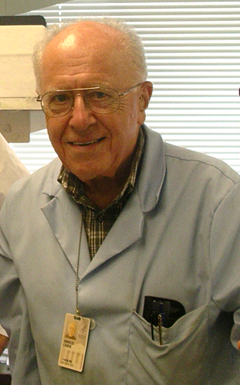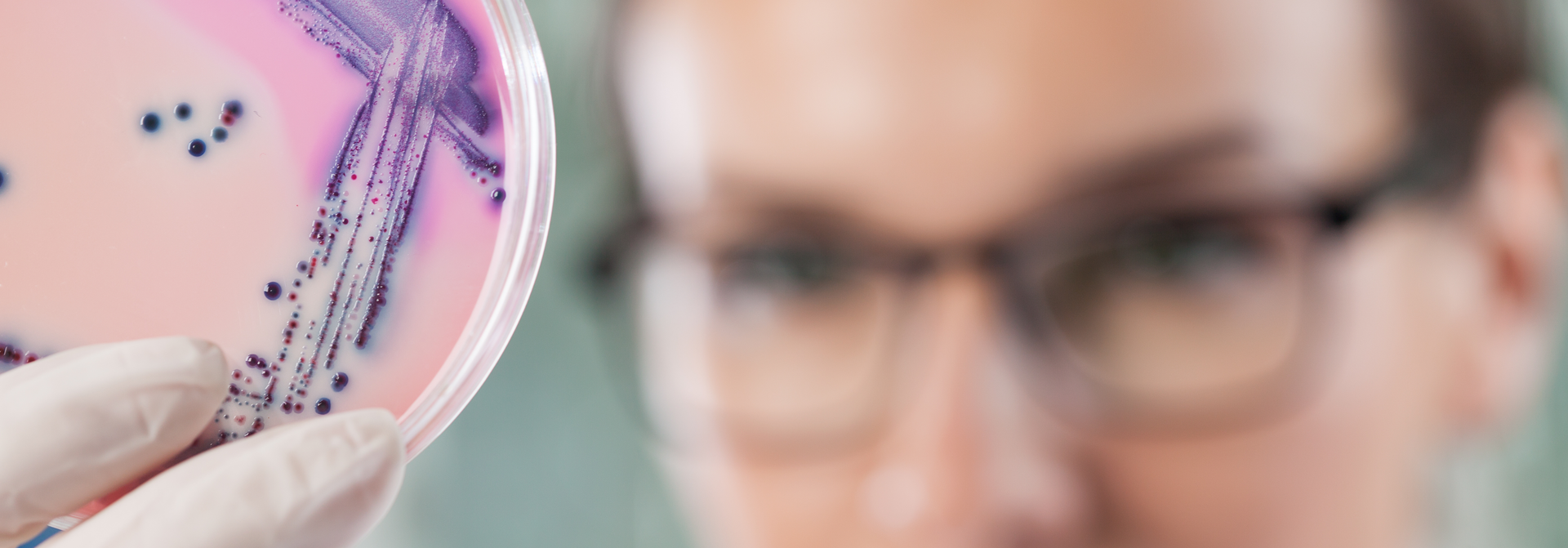In memory of Enrico Cabib, a great scientist, a great person, and an unforgettable friend.
It is our sad duty to announce to the international yeast community that Dr. Enrico Cabib, the prominent yeast researcher, passed away in Potomac, Maryland, USA on 24 February 2023, at age 98. He was one of the great scientists of the last century who laid down the foundations of modern molecular glycobiology.

Enrico was born in Genoa, Italy, on January 11, 1925. When he was sixteen, in 1941, his family emigrated to Argentina to escape anti-Semitic persecution. In 1944, he enrolled in chemistry at the School of Exact, Physical, and Natural Sciences at the University of Buenos Aires. After obtaining a degree in chemistry, he received a fellowship from the Institute for Biochemical Research, Campomar Foundation, in Buenos Aires. Working on his doctoral thesis, he experienced the thrill and satisfaction that scientific research brings sometimes to its fans; he realized that basic research was what he wanted to do for the rest of his life. At that time, the group led by his mentor, Dr. Luis Leloir, had discovered uridine diphosphate glucose (UDPG), the first sugar nucleotide identified, and found to act as a glucose donor in the synthesis of trehalose and sucrose. After defending his thesis on paper chromatography of proteins, Enrico continued working under the guidance of Leloir. He succeeded in the isolation and characterization of two new sugar nucleotides, uridine diphosphate-N-acetyl glucosamine (UDPAG) and guanosine diphosphate mannose (GDPM), and proved that they served as glycosyl donors in the biosynthesis of chitin and yeast mannan respectively. For the discovery of sugar nucleotides and their role in the biosynthesis of carbohydrates, Leloir obtained the Nobel Prize for chemistry in 1970.
In 1967, Enrico with his family (wife Amalia, daughters Claudia, Leila, and Cintia) moved to the United States. He joined the National Institutes of Health (NIH) in Bethesda, Maryland, as a principal investigator. Having at hand the three sugar nucleotides (UDPG, GDPM, and UDPAG) isolated from yeast, he showed that they were functioning as the respective glycosyl donors in the biosynthesis of yeast cell wall polysaccharides.
Enrico dedicated whole his life to yeast research studying cell wall biogenesis, particularly focusing on the main components of the cell walls – β-1,3 glucan, and chitin. He was intrigued by the questions of how these components are synthesized, and how their synthesis is regulated. Since the cell wall determines the shape of the cell, Enrico hoped to find an explanation of how the activities of individual enzymes are co-ordinated during morphogenesis. Collaborating with the authors of this article, Enrico identified and functionally characterized the cell wall transglycosylases that transfer chitin chains to glucan and proved that linkage between chitin and β-1,3-glucan is necessary to maintain shape at the mother–bud neck. His fundamental studies aimed at understanding how the yeast cell wall and septum function suggested these structures as potential targets for antifungal agents, as later confirmed with the development of echinocandins, inhibitors of β-1,3 glucan synthase activity. A detailed autobiographic story about Enrico’s life and scientific achievements has also been published in FEMS Yeast Research.
Enrico Cabib belonged to the generation of scientists who grew up in the absence of economic prosperity. The special chemicals, materials, and instruments needed for the research had to be prepared by the investigators themselves. As he used to say, unexpected difficulties challenged the ingenuousness and manual skills of researchers. He devised a number of special analytical methods used to study the structure and composition of the yeast cell walls. Laboratories throughout the world have adopted many methods that he invented. As a mentor, Enrico always advised his students not to get discouraged if something doesn’t work as we expect it should. He emphasized that in science, persistence is as important as intelligence.
Enrico was a very sympathetic person, always ready to help if someone needed it. His work and personality attracted many international students and researchers (including the authors of this article) who went to Bethesda to work under his guidance. Enrico had a good sense of humor and cheered his coworkers with entertaining stories. Following a 63-year research career, including 45 years in NIDDK’s Laboratory of Biochemistry and Genetics, Morphogenesis Section, Dr. Enrico Cabib retired in November 2012. His little car with the license plate YEAST no longer parks in front of Building 8. With Enrico’s death, the international yeast community has lost one of its prominent figures. Everyone who studies yeast has been in some way influenced by his work and is profiting from the results of his long scientific research career. Over the years, his discoveries and conclusions are finding their place in Biochemistry textbooks, thus making Enrico Cabib immortal.
Authors:
- Vladimír Farkaš, Institute of Chemistry, Slovak Academy of Sciences, Bratislava (Slovakia)
- Javier Arroyo, Facultad de Farmacía, Universidad Complutense, Madrid (Spain)
